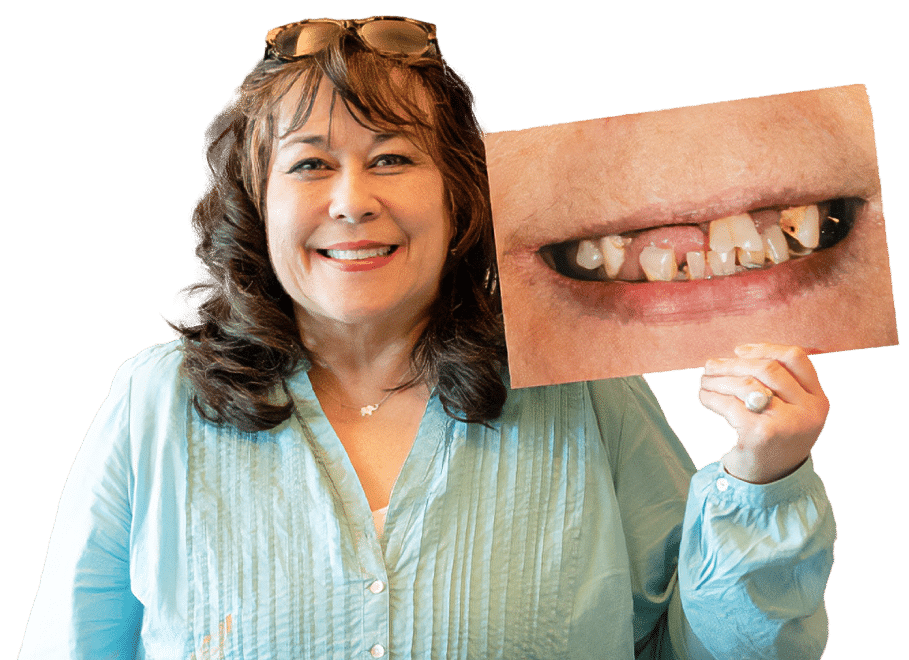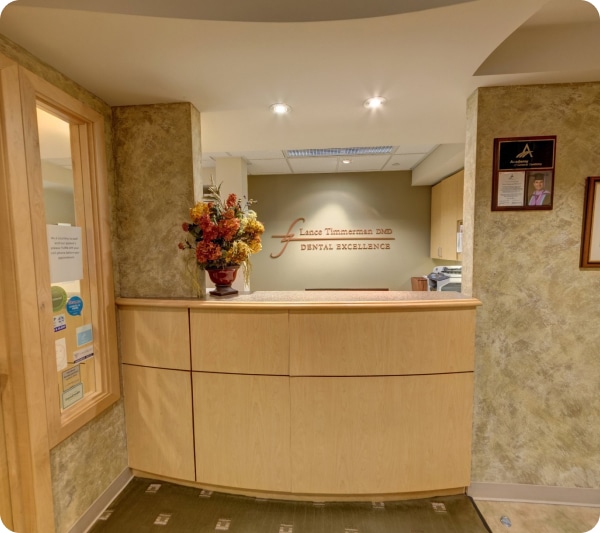It can be a great challenge to diagnose TMJ issues, let alone TREAT. Dr Timmerman uses state-of-the-art technology to determine if your symptoms are caused by malocclusion and if so, what your optimal jaw position is. He uses computerized jaw tracking instruments to record jaw movement, resting position, and path of closure. Electromyography is used to measure your jaw’s muscle function in both its stressed and relaxed positions, and will also measure the jaw-to-skull relationship to see if there is a structural imbalance. Sonography is used to record jaw joint sounds to detect any abnormalities. Additionally, x-rays of the jaw may be taken to help evaluate the condition and positioning of the joint.
Once Dr Timmerman has diagnosed you with TMJ, he can determine the best course of treatment for your specific needs. Typically treatment will follow three steps:
- Relieve muscle spasm and pain.
The immediate concern for Dr Timmerman is to provide relief of your symptoms. The best way to do this is by using a technology called ULF-TENS. ULF-TENS stands for Ultra Low Frequency Trans-cutaneous Electrical Neural Stimulation, but don’t let this term intimidate you. Basically, ULF-TENS is a way to relax muscles with a gentle massage of the muscles. The rhythmic pulsing relaxes the muscles by increasing blood flow and pumping out waste products. ULF-TENS also helps with pain relief by stimulating the body’s production of endorphins, the body’s natural anesthetic.
2. Stabilize the bite.
Often for this step a temporary device, known as an orthotic is worn over the teeth. The orthotic allows Dr Timmerman to make easy adjustments to the plastic without adjusting the teeth until the bite is stabilized. Once symptoms are relieved and the bite has been stabilized, Dr Timmerman will move on to the next step and permanently adjust your bite to the correct position.
3. Long-term management.
There are a variety of ways to correct your bite in a more permanent way. Four of the most common of these approaches are outlined below:
- Coronoplasty/Equilibration
Coronoplasty is smoothing and reshaping the enamel of the teeth to correct your bite. It is a simple procedure that does not require anesthesia and can be used when the bite is only slightly misaligned. - Removable Overlay Partials
These are permanent orthotics that usually fit over the back teeth and are designed to maintain an aligned bite. - Reconstruction
This approach involves making the teeth higher by using crowns. This permanently realigns the bite and provides structural support for the jaw. - Orthodontics (Braces)
When the teeth are healthy they may be moved to the optimal position using braces.
More To Explore
If you have dentures to replace your missing teeth, then you’re probably already aware of the many benefits that come...
If your dentist recommends root canal therapy to prevent extraction, don’t worry about a large bill. It’s more affordable to...
Is your jaw stiff or painful to move on one or both sides? A disorder of the temporomandibular joints (TMJ)...
Every Patient Deserves A Healthy, Beautiful Smile.
We take the time to make everything right. Just imagine:
- Get your life back with renewed confidence
- Be healthy and feel amazing for a lifetime
- Eat and love your favorite foods again

- I Need a Checkup & Cleaning
- I am Concerned About Bleeding Gums
- I Have a Cavity or Broken Tooth
- I am Missing One or More Teeth
- The Whole Tooth Podcast
- I Have Pain When Opening or Closing my Mouth
- I am Unhappy with My Smile
- I Want a Straighter Smile
- I am Scared of the Dentist
- I am In Pain & Need Help
- I Need My Wisdom Teeth Removed
- I am Interested in Sleep Apnea Treatment
Designed by Dental Implant Machine
Discover your orthodontic options to see which is the best for you
Unlock a Restful Night’s Sleep
Discover the Best Option to Get a Beautiful White Smile
Discover the Best Option to Get a Beautiful White Smile


